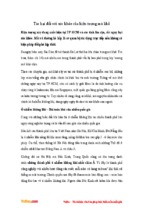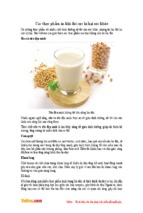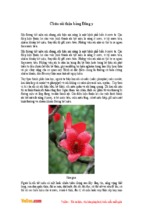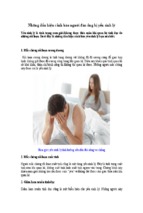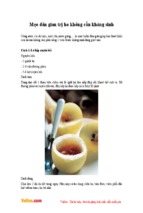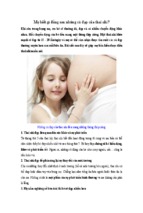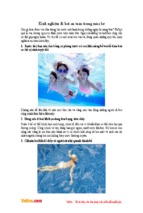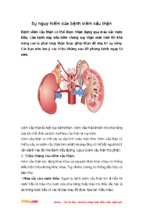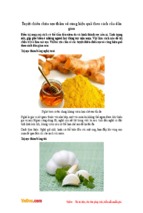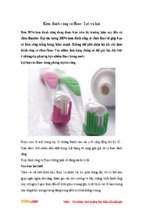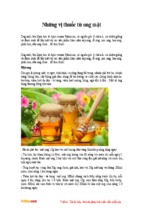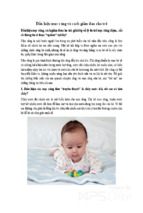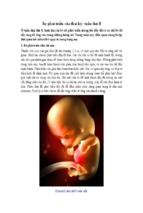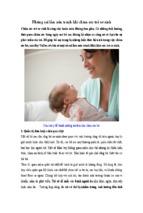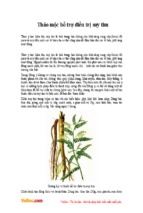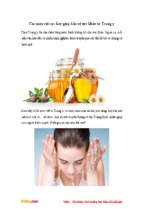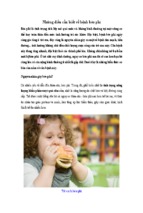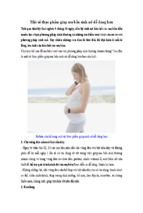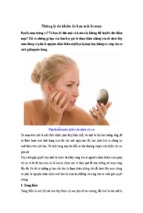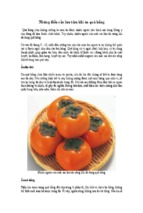Xijun Yan Editor
Dan Shen
(Salvia miltiorrhiza)
in Medicine
Volume 3. Clinical Research
Dan Shen (Salvia miltiorrhiza)
in Medicine
Xijun Yan
Editor
Dan Shen (Salvia
miltiorrhiza) in Medicine
Volume 3. Clinical Research
123
Editor
Xijun Yan
Tianjin
China
ISBN 978-94-017-9465-7
DOI 10.1007/978-94-017-9466-4
ISBN 978-94-017-9466-4
(eBook)
Springer Dordrecht Heidelberg New York London
Library of Congress Control Number: 2014950646
© Springer Science+Business Media Dordrecht and People’s Medical Publishing House 2015
This work is subject to copyright. All rights are reserved by the Publishers, whether the whole
or part of the material is concerned, specifically the rights of translation, reprinting, reuse of
illustrations, recitation, broadcasting, reproduction on microfilms or in any other physical way,
and transmission or information storage and retrieval, electronic adaptation, computer software,
or by similar or dissimilar methodology now known or hereafter developed. Exempted from this
legal reservation are brief excerpts in connection with reviews or scholarly analysis or material
supplied specifically for the purpose of being entered and executed on a computer system, for
exclusive use by the purchaser of the work. Duplication of this publication or parts thereof is
permitted only under the provisions of the Copyright Law of the Publishers’ locations, in its
current version, and permission for use must always be obtained from Springer. Permissions for
use may be obtained through RightsLink at the Copyright Clearance Center. Violations are
liable to prosecution under the respective Copyright Law.
The use of general descriptive names, registered names, trademarks, service marks, etc. in this
publication does not imply, even in the absence of a specific statement, that such names are
exempt from the relevant protective laws and regulations and therefore free for general use.
While the advice and information in this book are believed to be true and accurate at the date of
publication, neither the authors nor the editors nor the publishers can accept any legal
responsibility for any errors or omissions that may be made. The publishers make no warranty,
express or implied, with respect to the material contained herein.
Printed on acid-free paper
Springer is part of Springer Science+Business Media (www.springer.com)
Foreword
Danshen was originally recorded in Shen Nong’s Classic of the Materia
Medica, and detailed information on the herb was also recorded in Thoroughly Revised Materia Medica and The Grand Compendium of Materia
Medica in later ages. Danshen is bitter in taste and slightly warm in nature,
and is a commonly used but important drug with the function of activating
blood circulation and dissipating blood stasis. Danshen has wide applications
and good therapeutic effects, is neutral in nature and non-venomous, and its
source is widespread and inexpensive, so it is worthy of research and promotion in clinical settings.
Based on other researchers’ and our own long-term clinical experience in
the application of Danshen, we have found that Danshen has extensive
pharmacologic actions and its unique therapeutic actions can be obtained by
flexible combination with other drugs. Clinically, Danshen can be used alone
to treat various diseases, and pharmacologic actions can be obtained by
combination with other drugs. It can ascend and descend along the channels,
and has good therapeutic effects on deficiency syndrome and excess syndrome; thus it can be applied extensively in the clinical treatment of various
diseases. Based on a summary of the clinical experience with Danshen of
prominent TCM doctors, we propose the following principles and methods
which could be used as a reference for clinical medical professionals.
Invigorating Blood and Dissolving Stasis, Treating Upper
and Lower Diseases, as Well as the Syndromes of Deficiency
and Excess
Treating Upper Diseases
Anemarrhena, Phellodendron, and Rehmannia Decoction combined with
Danshen, magnetite, cicada moulting, and cyathula root can be used for
treatment of patients with symptoms of sudden deafness or hearing loss
caused by deficiency in the liver and kidney and stagnation of blood, which
has not been cured by long-term use of western medicines. The combination
v
vi
of Danshen, magnetite, chrysanthemum flower, common self-heal fruit-spike,
rehmannia root, Chinese gentian, and cyathula root can be used to treat
hyperpyrexia of the liver to eliminate liver fire and to dissolve stagnant blood
and promote blood circulation, and good therapeutic effects have been
obtained. Danshen and magnetite can be used to treat hypertension according
to the differentiation of the symptoms, and excellent therapeutic effects have
been achieved. Danshen combined with almond, platycodon root, and
Sichuan fritillaria bulb etc., has the function of diffusing the lung, activating
blood circulation, depressing qi, and stopping coughing.
Treating Lower Diseases
Danshen has the functions of unblocking blood vessels and meridians, activating blood circulation, and removing obstruction in collaterals, and the drug
is bitter in taste and acts in lower meridians, so it is especially suitable for
chronic diseases of the lower part of the body. For example, when combined
with asper-like teasel root, double teeth angelica root, cyathula root, and
Chinese taxillus herb belongs, Danshen can be used to treat rheumatic
arthralgia in the lower limbs. Combined with honeysuckle stem, swordlike
atractylodes rhizome, cyathula root, amur corktree bark, red peony root, cortex
moutan, and Chinese pine nodular branch, etc., Danshen can be used to treat
beriberoid pyretic arthralgia with the symptom of red swelling joint. Combined with Chinese angelica, suberect spatholobus stem, figwort root, rehmannia dride rhizome, Japanese honeysuckle flower bud, cassiabarktree twig,
and pangolin scales, etc., Danshen can be used to treat vasculitis in lower
limbs. Combined with Chinese angelica, nutgrass galingale rhizome, common
motherwort herb, Danshen can be used to treat menoxenia, menischesis, or
blood stasis and abdominal pain after childbirth, and marked effects can be
obtained. The same effect can be achieved using Danshen alone: just take
Danshen powder with white spirit. Danshen can be combined with rehmannia
dride rhizome, prepared rhizome of rehmannia, common anemarrhena,
cyathula root, amur corktree bark, hindu lotus stemen, tremolite, fructus corni,
wenchow turmeric root tuber, incised notopterygium rhizome and root, and
white peony root, etc., to treat liver kidney yin insufficiency or heat
accumulation and impotence and prospermia. The above formula is called
Essence-Securing and Yang-Raising Decoction (固精启阳汤), with
significant therapeutic effects.
Treating Deficiency Syndromes
The symptoms of deficiency syndromes include asthenia of healthy energy
due to long duration of disease, weakness of blood circulation, prolonged
deficiency, and excessive stasis. Danshen has the functions of removing
Foreword
Foreword
vii
blood stasis and producing new blood, promoting blood circulation but not
disintegrating blood stasis. It was described by the ancients that the effect of
Danshen is equivalent to that of Four Substances Decoction. Although the
effect of Danshen might be exaggerated, Danshen does activate blood circulation and dissipate blood stasis. According to The Grand Compendium of
Materia Medica, Danshen’s function is to nourish the blood. Yishen
Dingxuan Decoction (益肾定眩汤), which is Lycium Berry, Chrysanthemumm, and Rehmannia Decoction with the addition of Danshen, magnetite,
szechwan lovage rhizome, tall gastrodia rhizome, can be used to treat dizziness due to deficiency syndrome, especially kidney deficiency combined
with blood stasis with the symptoms of dizziness, soreness, and weakness of
waist and knees, gloomy tongue, deep thin and unsmooth pulse, etc. Danshen
is usually combined with stir-baked semen ziziphi spinosae, Chinese
angelica, rehmannia dride rhizome, and Chinese magnoliavine fruit, etc., to
treat palpitation due to deficiency of blood and insomnia, which was called
“cultivating the spirit and calming the mind” in The Materia Medica of Ming
Dynasty 《大明本草》
(
). Danshen can be combined with mongolian milkvetch root, Chinese angelica, tuber fleeceflower root and medicinal morinda
root to treat deficiency-consumption diseases with symptoms of extreme
deficiency of qi and blood, deficiency of kidney qi, and stagnant blood.
Treating Excess Syndromes
The six pathogenic factors and the seven emotions can hurt the body, and
eventually will cause the stasis of qi and blood and show the symptoms of qi
stagnation and blood stasis. Danshen has the functions of activating blood
circulation and eliminating stagnation, thus it has been used to treat excess
syndromes with certain therapeutic effects. For example, Danshen Beverage
is usually combined with sandalwood, villous amomum fruit, and turmeric
root tuber to treat patients with hepatogenous gastralgia caused by the
depression and stagnation of qi and stagnation of blood; thus it can benefit
the patients by regulating vital energy and activating blood circulation. Also,
these drugs can complement each other very well. Henoch-Schonlein purpura
can be treated with the combination of Danshen, suberect spatholobus stem,
Indian madder root, redroot gromwell, and red date. It is called “disintegrating stagnated blood, producing fresh blood”; thus the blood escaped from
blood channels could return to the meridians. Patients with mania usually
suffer from excessive fire, stagnation, and phlegm, and they can be treated
with large doses of Danshen based on the symptoms. Menostasis with the
symptom of edema usually can be treated with Five Substances Powder with
Poria combined with Danshen, amber, common motherwort herb, mongolian
milkvetch root, etc.
viii
Nourishing Blood, Calming the Mind, Eliminating
Deficiency-Heat, Stopping Shock, Alleviating Palpitations,
and Treating Heart Diseases
Danshen is bitter in taste and cold in nature, and acts on blood and returns to
the heart, with the functions of eliminating cardiopyrexia and blood heat,
calming the mind and palpitations. Thus, these kinds of diseases can be cured
rapidly with correct application of the drug.
Danshen can be combined with Chinese arborvilae seed, Chinese angelica, rehmannia dride rhizome, Chinese magnoliavine fruit, and stir-baked
semen ziziphi spinosae, etc., to treat palpitations and insomnia due to deficiency of blood. Yang Supplementing and Five Returning Decoction can be
combined with Danshen, prepared liquorice root, and dwarf lilyturf root
tuber, etc., to treat severe palpitations which belong to deficiency of heart-qi,
qi asthenia, and blood stasis.
Trichosanthes and Chinese Chive Decoction or Kuanxiong Tongbi
Decoction (宽胸通痹汤) (Danshen, mongolian snakegourd fruit, longstamen
onion bulb, sandalwood, cassiabarktree twig, Chinese pyrola herb, Chinese
hawthorn fruit, szechwan lovage rhizome, dwarf lilyturf root tuber, sanchi.
red peony root) can be used to treat hypofunction of yang qi in the chest.
Pulse-Engendering Powder and Yimai Tongbi Decoction (益脉通痹汤)
(Danshen, different leaves pseudostellaria root tuber, dwarf lilyturf root tuber,
Chinese magnoliavine fruit, mongolian snakegourd fruit, prepared liauorice
root, stir-baked semen ziziphi spinosae, rosewood heart wood, Chinese
hawthorn fruit, Chinese pyrola herb) can be used to treat deficiency in both qi
and yin. Based on the principle of Honey-Fried Licorice Decoction, Sishen
Anxin Decoction (四参安心汤) (Danshen, american cinseng, lightyellow
sophora root, figwort root, stir-baked semen ziziphi spinosae, dwarf lilyturf
root tuber, prepared liauorice root, cassiabarktree twig, Chinese hawthorn
fruit, Chinese pyrola herb) can be used to treat pectoral stuffiness pain and
chest pain, insomnia and pavor, arrhythmia, etc., and good effects have been
obtained in clinical treatment. This formula is especially suitable for patients
who have taken other prescriptions for a long time without any effects: in
treatment according to pattern differentiation, the drug can rapidly improve
the electrocardiogram or return it to normal. Stagnation of blood and blood
stasis can be induced by hypofunction of yang qi in the chest or deficiency in
both qi and yin. According to the theory that “stagnation of qi and blood may
bring about pain,” Danshen, which has the function of dissipating blood
stasis, can be added to prescriptions to obtain good therapeutic effects. It was
recorded in The Grand Compendium of Materia Medica that Danshen has the
functions of activating blood circulation, dredging the pericardium or the
envelope of the heart, and treating inveterate diseases of the heart, and it is
also recorded in Materia Medica of South Yunnan that Danshen has the
functions of supplementing the heart, calming the nerves, and treating
memory loss, severe palpitation, pavor, and sleeplessness, which demonstrates that Danshen has wide clinical application.
Foreword
Foreword
ix
Removing Blood Stasis, Promoting Fresh Blood Production
and Circulation, and Treating Acute and Chronic Diseases
Danshen has the functions of activating blood circulation and dissipating
blood stasis, promoting defecation and urination, and harmonizing qi and
blood; thus, extraordinary effects on the treatment of acute and chronic
deathly diseases can be obtained when the drug is used correctly. For
example, “Tongmai Shuluo Injection” (通脉舒络注射液) (main components
include mongolian milkvetch root, Danshen, and szechwan lovage rhizome,
etc.), which was developed according to the theory of “Yang-Supplementing
and Five-Returning Decoction” and invented by Wang Qingren of Qing
Dynasty, has significant therapeutic effects on the treatment of apoplexy;
“Naoqiaotong Oral Liquid” (脑窍通口服液) (main components are Danshen, peach seed, forest musk, and lalang grass rhizome, etc.), which was
developed according to the theory of “Tongqiao Huoxue Decoction” (通窍活
血汤) and invented by Wang Qingren, can be used for patients with the
symptoms of water stagnation of the brain, such as apoplexy, brain tumor,
and hydrocephalus.
Qingnao Tongluo Tablets (清脑通络片) (main components include
Danshen, florists dendranthema, etc.) can be used to prevent and treat
threatened apoplexy and apoplexy attacks, and good therapeutic effects can
be obtained in both animal experiments and clinical trials, with no toxicity or
side effects observed so far. The decoction of Angong Niuhuang Wan (安宫
牛黄丸) and Danshen can be administered by drench or nasal feeding to
coma patients due to obstruction of pathogen and pyretic block. The
decoction of Suhexiang Wan (苏合香丸) and Danshen can be administered
by drench or nasal feeding to patients with cold retention. However, Danshen
Injection by intramuscular or intravenous administration can be used for
patients with either cold or pyretic block. The drug can be taken orally with
Pujindan Ye (蒲金丹液) (tatarinow sweetflag rhizome, wenchow turmeric
root tuber, Danshen, etc.) for coma patients that belong to phlegm and
dampness block. 4–20 ml of Danshen Injection can be administered by
intramuscular injection or intravenous drip at the same time, and the symptoms can be alleviated or out of danger. Clinical practice has demonstrated
that Danshen has the functions of activating blood circulation, dredging
collaterals, removing blood stasis and promoting fresh blood production, and
promoting defecation and urination.
Danshen has the function of activating blood circulation and dissipating
blood stasis, and thus it can be used to treat ischemic stroke. The effect
depends on the function of removing blood stasis and promoting fresh blood
production. Pharmacological studies have demonstrated that Danshen can
inhibit blood clotting and enhance fibrinolysis activity. According to the
theory of Traditional Chinese Medicine, “It is better to promote blood circulation, but not stop bleeding” and “It is better to disperse blood stasis to
stop bleeding.” Danshen has the functions of improving microcirculatory
blood flow and increasing blood capillary networks, which can reduce blood
vessel pressure at the hemorrhage site and thus explains its function of
x
stopping bleeding. Therefore, the theory of activating blood circulation and
dissipating blood stasis has special effects on hemorrhagic stroke. The effects
and the formulas can vary based on normal prescriptions, and reaches the
best of using drugs flexibly.
Epilepsy can be treated with Danshen, tatarinow sweetflag rhizome,
thinleaf milkwort root, white Indian buead, stiff silkworm, and reddish
jackinthepulpit tuber. Yang hyperactivity due to insufficiency of yin in the
liver and kidney and phlegm stagnation in superficial venules and lymph
vessels can be treated with Danshen combined with dragon’s teeth, medicinal
cyathula officinalis root, amber, glossy privet fruit, cortex moutan and
antelope horn, etc. The above complicated miscellaneous diseases can usually be treated by taking oral decoctions combined with 4 ml of Danshen
Injection by intramuscular injection according to the patient’s symptoms and
signs, and the symptoms can usually be relieved in nonresponders to longterm treatment. To sum up, strange diseases are usually caused by stagnation
and prolonged diseases are accompanied by phlegm, which is a key to the
treatment of difficult and complicated diseases. As is recorded in Seeking
Accuracy in the Materia Medica, with its function of eliminating stagnation,
Danshen can treat all kinds of diseases.
Clearing Liver, Promoting Gallbladder Function, Dredging
Constraint and Stagnation, and Treating Concretions,
Conglomerations, Accumulations, and Gatherings
with Good Effects
Symptoms such as concretions, conglomerations, accumulations, and gatherings (four types of diseases in TCM) are usually initially induced by livergallbladder damp-heat, qi flow disorder in the liver, disturbance of qi
movement, or spleen deficiency with damp exuberance, which lead to the
disharmony of liver and spleen and dysfunctions of liver, spleen, and kidney.
Eventually, these illnesses will result in qi stagnation, blood stasis, and water
retention which will accumulate in the abdomen and cause the diseases of
concretions, conglomerations, accumulations, and gatherings. Danshen can
come into the blood through the liver meridian, and has the functions of
promoting blood circulation and qi stagnation, removing blood stasis and
promoting water movement, and activating collaterals and subsiding swelling, and thus it is commonly used. For example, hepatitis B belongs to yin
insufficiency of the liver and kidney, and can be treated with Effective
Integration Decoction, with Danshen usually added into the Decoction. Drugs
treating jaundice in different phases usually contain Danshen. Patients with
dampness and stagnation can also be treated with Danshen in combination
with Chinese thorowax root, Chinese angelica, turtle carapace, common
oyster shell, chicken’s gizzard-membrane, areca peel, Indian buead, common
burreed tuber, blue turmeric rhizome, etc. Patients with gallstones can be
Foreword
Foreword
xi
treated with Danshen combined with rhubarb, chicken’s gizzard-membrane,
christina loosestrife herb, Chinese thorowax root, and immature bitter orange.
All of these prescriptions have reliable therapeutic effects in improving
liver function, softening the liver and spleen, shrinking lumps, eliminating
stagnation, and removing urinary calculus. Pharmacological studies on
Danshen have demonstrated that it has the functions of reducing the activity
of transaminase, protecting injured hepatocytes, promoting cell regeneration
and anti-hepatic fibrosis, etc. This is what is meant in Shen Nong’s Classic of
the Materia Medica when Danshen has the functions of eliminating accumulations and gatherings of cold and heat, breaking concretions, and
removing conglomerations.
Dissipating Blood Stasis, Clearing Sanjiao Dampness,
and Both Yin Edema and Yang Edema can be Treated
Danshen has the functions of promoting blood circulation, clearing waterways, and alleviating edema; thus it can be used to treat edema caused by
water retention and blood stasis. Animal experiments have demonstrated that
Danshen has the functions of improving renal function, reducing azotemia,
and increasing urinary production. Edema belongs to the category of yin
water; patients with this disease have symptoms of lower limb and general
edema. The symptoms of soreness and hypodynamia are caused by blood
stasis and kidney deficiency (e.g., chronic glomerulonephritis, chronic
pyelonephritis, nephrotic syndrome), which can be treated with Yishen
Huaru Lishui Decoction (益肾化瘀利水汤) (Five Substances Powder with
Poria combined with Danshen, mongolian milkvetch root, Chinese taxillus
herb, common motherwort herb, medicinal cyathula officinalis root, Chinese
hawthorn fruit, lalang grass rhizome, rice paper plant pith). Patients with
edema of the lower limbs, drowsiness acratia, abdominal distension, gloomy
tongue with stagnation, knotted and intermittent pulse, etc., caused by deficiency of kidney qi and dampness and blood stasis, usually can be treated
with True Warrior Decoction combined with Danshen, peach seed, mongolian milkvetch root, and lalang grass rhizome. Patients with symptoms of
deficiency of kidney yang can be treated with Golden Cabinet’s Kidney Qi
Decoction combined with Danshen, Lalang Grass Rhizome, Eucommia Bark,
etc. Patients with symptoms of qi stagnation and water retention can be
treated with Bupleurum Liver-Soothing Powder combined with Five Substances Powder with Poria and Danshen, etc. Patients with facial edema
(acute renal glomerulus nephritis), which belongs to invasion of the lung by
pathogenic wind and disturbance of qi movement in sanjiao, can be treated
with Maidservant From Yue Decoction with White Atractylodes Rhizome
(越婢加术汤) combined with Danshen, Indian buead, asiatic plantain seed,
weeping forsythia fruit, etc. Patients with symptoms of lung qi deficiencycold and impaired waterways can be treated with Linggan Wuwei Jiangxin
Decoction (苓甘五味姜辛汤) combined with Danshen, etc., and the therapeutic effects can be enhanced by Danshen.
xii
Clinically, if the symptoms are defined correctly and the prescription and
drugs are reasonably used, Danshen can normally help improve urine
abnormalities in patients. The movement of fluid in the body depends on the
regulatory function of lung qi, the transfusion function of spleen qi, and the
transpiration function of kidney qi. When the body is invaded by exogenous
pathogens, the functions of visceral organs are disturbed or the visceral
organs are deficient in qi, the functions of sanjiao will be impaired, waterways will be blocked, and water overflows under the skin and muscle, which
will lead to edema. Water and blood are homologous. According to On
Hyperlipidemia 《
( 血症论》), water and blood have mutual dependence and
they hold together; so water retention and blood stasis are interactive.
However, both yin edema and yang edema can coexist with stagnation and
the only difference is the order of importance and urgency, which is referred
to as “unsmooth blood circulation results in water, and water retention results
in blood stasis” in TCM.
Cooling Blood, Detoxication, Subsiding Swelling,
and Eliminating Carbuncles and Sores
Danshen also has functions of subsiding swelling and relieving pain, cooling
blood and detoxication, discharging pus, and promoting the growth of flesh.
Danshen can be combined with drugs such as weeping forsythia fruit,
snakegourd root, mongolian dandelion herb, mongolian snakegourd fruit,
etc., to treat mammary abscess. The drug can be combined with Japanese
honeysuckle flower bud, weeping forsythia fruit, frankincense, or myrrh to
treat swelling. Patients with acute abdominal pain (acute appendicitis, etc.)
can be treated with Dahuang Mudan Decoction (大黄牡丹汤) combined with
Danshen, sargentgloryvine stem, etc., and good therapeutic effects have been
obtained. Patients with chronic appendicitis can usually be treated with
Danshen combined with Chinese thorowax root, Indian buead, Chinese
goldthread rhizome, widely costusroot, yanhusuo tuber, nutgrass galingale
rhizome, mongolian dandelion herb, medicated leaven, etc.
Danshen also has the function of cooling blood and detoxication, and thus
various poisonings can be treated with Lüdou Gancao Jiedu Decoction (绿豆
甘草解毒汤) (mung bean, liquorice root, weeping forsythia fruit, noble
dendrobium stem herb, Danshen, rhubarb, lalang grass rhizome). Patients
with dampness, stagnation, pruritus vulvae, and morbid leukorrhea (e.g.
cervical erosion, condyloma acuminatum, etc.) can usually be treated with
Danshen combined with amur corktree bark, lightyellow sophora root, raw
liquorice root, largehead atractylodes rhizome, swordlike atractylodes rhizome, rhiizoma dioscoreae from Henan of China, glabrous greenbrier rhizome, belvedere fruit, wild dendranthema flower, ginkgo seed, etc. The drugs
can be taken orally or used as a washing solution, and significant therapeutic
effects have been obtained. Patients with dampness and stagnation and
dysentery can usually be treated with Pulsatilla Decoction combined with
Danshen. Patients with hyperpyrexia and coma can be treated with Peaceful
Foreword
Foreword
xiii
Palace Bovine Bezoar Pill decocted with Danshen and taken orally, which
can enhance the therapeutic effects and shorten the course of treatment.
Patients with scabies with dampness-heat can be treated with Danshen,
lightyellow sophora root, and common cnidium fruit, etc., by washing the
affected part. It is recorded in The Materia Medica of Ming Dynasty that
Danshen has the function of treating ulcers and carbuncles, goiters and
swelling and erysipelas, discharging pus, relieving pain, and promoting the
growth of flesh. Modern pharmacological research has shown that Danshen
has strong inhibitory effects against Staphylococcus, Escherichia coli,
Bacillus proteus, Bacterium typhosum, and has a certain degree of inhibitory
effect against Bacillus dysenteriae.
In summary, drugs cannot be classified into noble or humble classes; the
important thing is how and where to use them. Danshen is cold in nature and
bitter in taste, has the function of activating blood circulation and dissipating
blood stasis, activating collaterals and dredging bi symptoms, promoting
blood circulation but not breaking stagnated blood, reaching viscera and all
bones, calming the nerves and relieving restlessness, detoxicating and
cooling blood, subsiding swelling and relieving pain, promoting tissue
regeneration, and treating ulcerative carbuncles and scabies. When a flexible
and changeable prescription is made according to the symptoms, good effects
usually can be obtained by application of Danshen. However, we need to pay
attention to the fact that large doses of the drug can induce diarrhea, and thus
people with loose stool due to spleen deficiency and pregnancy should use
the drug with caution. There is a great difference in the dosage of Danshen
between ancient and modern society; the dosage for adults usually ranges
from 10 to 30 g, reaching up to 60 g for some people. The dosage should be
small at the beginning and can be increased gradually.
Preface to Dan Shen (Salvia miltiorrhiza)
in Medicine
In the 2008 press conference on the publication of the Chinese edition of the
Dan Shen (Salvia miltiorrhiza) in Medicine, several volume editors suggested that the book should be translated into English and distributed internationally. They all believed that the medical communities are enthusiastic
about TCM research, and that among the studies on single herbs, the study of
Danshen has taken the lead. Therefore, it was a worthy undertaking to
introduce the study conducted by the Chinese people over the past 1,000
years, and especially in the past 30 years, to the world. Meanwhile, I was
asked unanimously to be its editor-in-chief. After several years of hard work
by nearly 100 professors and research scientists, the translation is finally
complete.
The English edition of Dan Shen (Salvia miltiorrhiza) in Medicine is
based on its Chinese edition. Modifications include changing the five-volume
format to one volume and deleting some duplicated portions in the Chinese
edition. Since the chapters in each volume of the Chinese edition were
written by many individuals, details such as biological properties and ancient
literature reviews were repeated many times, and the duplications were
deleted in the English edition. Also, the various names of Danshen were
unified. The appendix in the fifth volume, the prescriptions or formulas in
ancient China, and the chapter on information management in the fourth
volume were also deleted. The introduction to the production region, common names, and phytochemical components had appeared in the first three
volumes, while this time only their first appearance was preserved. Some
typos and oversights were corrected after consulting with volume editors.
New progress in Danshen research was included in this book, such as the
development of Salvianolate Lyophilized Injection, which finally came on
the market in 2011 after 8 years of strict examination, and it was a landmark
event in the development of TCM injections. It is unfortunate that we could
not include the data on Qishenyiqi Dripping Pills, as the papers have not been
published yet. The drug, developed by academician Boli Zhang, passed
large-scale, evidence-based medicine clinical research trials in 2010, the first
for a TCM drug, and won the 2011 National Science and Technology Progress Award.
In principle, the English edition of Dan Shen (Salvia miltiorrhiza) in
Medicine is the translation of the Chinese edition, thus preserving the latter’s
framework. Because the Chinese edition was written by more than 100
xv
xvi
Preface to Dan Shen (Salvia miltiorrhiza) in Medicine
scholars and published in five volumes, the styles and layouts were not
identical. For example, some references were listed at the end of the chapter,
while some were listed at the end of the section. The English edition did not
change the style.
Dan Shen (Salvia miltiorrhiza) in Medicine has amassed Danshen
research results since the times of ancient China—it is not only a magnificent
historical scroll, but also a huge work which shines the light of modern
science and technology.
I sincerely thank academicians Yongyan Wang and Boli Zhang. They
have given me so much substantive guidance and encouragement despite
their busy schedules. Without their help, it would have been impossible to
finish the work. I also want to thank every author and volume editor who has
participated in the writing and editing of both editions of this book; they have
solved various problems which arose during the writing and translating
processes. Last but not least, I want to thank the comrades working in the
office of Dan Shen (Salvia miltiorrhiza) in Medicine, who have worked
patiently and diligently over the past 15 years, collecting and organizing data
and information.
The publication of the English edition of Dan Shen (Salvia miltiorrhiza)
in Medicine is a testimony of our sincere desire for the communication and
discussion of TCM among international communities. We earnestly welcome
suggestions and criticism from our colleagues around the world.
Xijun Yan
Editing Committee
Chief Editor
Xijun Yan
Chief Reviewers
Yongyan Wang
Boli Zhang
Associate Chief Editors
Naifeng Wu
Guoguang Zhu
Luqi Huang
Lianniang Li
Houwei Luo
Juntian Zhang
Guanhua Du
Dean Guo
Yiyu Cheng
Xuewen Zhang
Xinde Shi
Zhengliang Ye
Yonghong Zhu
Shuiping Zhou
Hanxi Xue
Editing Office
Director
Renshu Li
Members
Yonghong Zhu
Zhengliang Ye
Hanxi Xue
Ying Zhao
xvii
xviii
Volume 1. Biology and Chemistry
Chief Editors
Luqi Huang
Lianniang Li
Houwei Luo
Associate Chief Editors
Deyou Qiu
Zongsuo Liang
Min Chen
Editors
Xuefeng Feng
Wenting Liu
Xirong He
Jingyuan Song
Deyou Qiu
Min Chen
Jinda Hao
Lanping Guo
Guanghon Cui
Zongsuo Liang
Luqi Huang
Houwei Luo
Lianniang Li
Volume 2. Pharmacology and Quality Control
Chief Editors
Juntian Zhang
Guanhua Du
Dean Guo
Associate Chief Editors
Xiumei Gao
Shen Ji
Ming Zhu
Rongxia Liu
Haibin Qu
Editors
Lianhua Fang
Yitao Wang
Xiaoying Wang
Yuehua Wang
Dongxia Wang
Xiaoming Wang
Editing Committee
Editing Committee
xix
Yi Wang
Jinhua Wang
Jie Wang
Xiaoying Wang
Hongmei Guang
Changsuo Liu
Ailin Liu
Yan Sun
Yonghong Zhu
Jinglan Xu
Guorong He
Xiuying Yang
Danshen Zhang
Tiantai Zhang
Ran Zhang
Juntian Zhang
Li Zhang
Lihua Zhang
Bin Zhang
Chuan Li
Guanhua Du
Rong Du
Ping Chen
Yonghong Chen
Xiuping Chen
Ji Chen
Shuiping Zhou
Zhiwei Qu
Xiaoming Zhu
Zhihao Jiang
Minke Tang
Zhiwen Li
Zhixin Guo
Xiumei Gao
Mei Gao
Hongcai Shang
Xinrui Cheng
Guangliang Han
Jingyan Han
Yanqiao Zang
Ying Dai
Linke Ma
Hongzhi Wang
Junquan Wang
Yi Wang
Zhun Feng
Zhengliang Ye
Yonghui Liu
Yan Liu
xx
Rongxia Liu
Shunhang Liu
Aihua Liu
Xuesong Liu
Jianghao Sun
Guoqing Wu
Ling Tong
Yongjiang Wu
Wanying Wu
Xiaoqian Zhang
Xuemin Zhang
Jinlan Zhang
Xian Zhang
Yunfei Li
Manling Li
Min Yang
Yuewu Yang
Bilian Chen
Shen Ji
Jianping Lin
Dean Guo
Guoqiang Fan
Xiaohui Fan
Qiang Zheng
Zhangzhao Jin
Ming Zhu
Jun Gao
Hongfang Cui
Fenglan Cao
Rixin Liang
Shunnan Zhang
Qing Gong
Haiou Dong
Jianping Han
Haibin Qu
Volume 3. Clinical Research
Chief Editors
Guoguang Zhu
Xuewen Zhang
Xinde Shi
Associate Chief Editors
Yi Zheng
Ruizhi Luo
Naifeng Wu
Editing Committee
Editing Committee
xxi
Editors
Xinde Shi
Yan Liu
Jinping Liu
Jia Liu
Yonghong Zhu
Danyong Wu
Naifeng Wu
Xuewen Zhang
Renshu Li
Ruizhi Luo
Yi Zheng
Guoguang Zhu
Jingsheng Zhao
Ying Zhao
Jiaoli Guo
Shunnan Zhang
Keqin Han
- Xem thêm -

